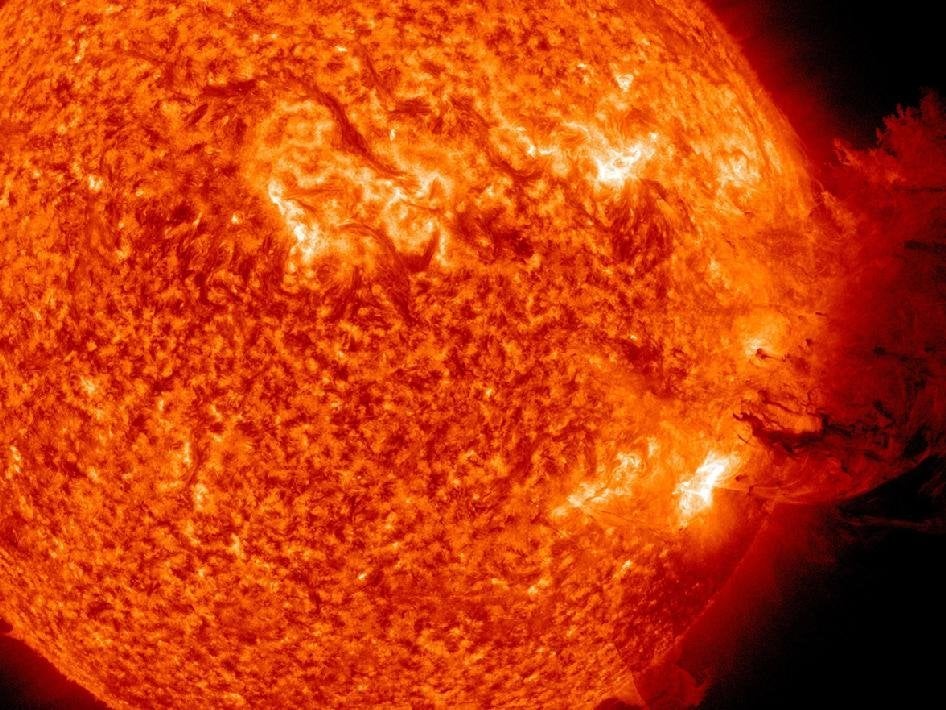
Policy makers in the U.S. need to get serious about the threat posed by solar storms. So says Dr. Daniel Baker, a University of Colorado solar scientist with significant expertise in sun storms -- like the huge one the sun fired off in July 2012.
“My space weather colleagues believe that until we have an event that slams Earth and causes complete mayhem, policy makers are not going to pay attention,” Baker, director of the university's Laboratory for Atmospheric and Space Physics, said in a written statement. “The message we are trying to convey is that we made direct measurements of the 2012 event and saw the full consequences without going through a direct hit on our planet.”
The high-energy particles liberated by a major flare could disrupt transportation, communication, and financial systems in addition to limiting the availability of food, medications, and drinking water, according to a 2008 National Resource Council report, which Baker co-authored.
Baker isn't alone in his concern over the risk posed by solar storms. A 2013 report from the Royal Academy of Engineering in London called for the creation of a space weather board to help plan for a solar superstorm. It also called for a system to warn of dangerous space weather radiation.
What exactly is Baker proposing? That the 2012 event be adopted as "the best estimate of the worst case space weather scenario" and be used to create models to predict the effects such a storm would have on power grids and other vulnerable systems.
The 2012 solar storm largely missed Earth but could have been highly disruptive if radiation from it had given the planet a direct hit, Baker said. The area of the sun that produced the solar explosion was facing away from us, but just a week earlier that same area was pointed right at Earth, he said.
The 2012 event was also alarming to Baker for the speed at which the radiation it produced traveled through space. Generally, coronal mass ejections take two to three days to reach Earth, but the 2012 ejection reached Earth in 18 hours.
“The speed of this event was as fast or faster than anything that has been seen in the modern space age,” Baker said in the statement. "The event not only had the most powerful CME ever recorded, but it would have triggered one of the strongest geomagnetic storms and the highest density of particle fluctuation ever seen in a typical solar cycle, which lasts roughly 11 years."
The largest solar storm on record is believed to be the so-called "Carrington event" in 1859 -- an event that reportedly set telegraph machines ablaze and caused auroras borealis so bright that people could read well into the night. Yet there's speculation that the 2012 CME was likely even more powerful.
“The Carrington storm and the 2012 event show that extreme space weather events can happen even during a modest solar cycle like the one presently underway,” Baker said. “Rather than wait and pick up the pieces, we ought to take lessons from these events to prepare ourselves for inevitable future solar storms.”

